The ASRock Phantom Gaming B850I Lightning Wi-Fi is a Mini-ITX motherboard built for those who want high performance in a compact form. Designed to suit small form factor systems, it delivers a balanced blend of modern features and hardware support without the bulk of a full-sized board. Its configuration caters to users aiming to build efficient, space-saving PCs that still pack serious capability.
This board supports AMD’s latest processors and next-gen connectivity, offering features typically reserved for larger motherboards. Despite its small footprint, it includes advanced power delivery, fast memory compatibility, and solid thermal solutions. Its layout and engineering reflect a clear focus on usability, stability, and high-speed performance.
ASRock’s attention to detail extends to its styling, ensuring the board looks clean and purposeful inside a windowed case. It feels like a thoughtfully assembled package that aims to give small form factor enthusiasts everything they need, without compromise. Whether you’re gaming, editing, or streaming, this board is built to handle it.
Design and Functionality
The ASRock Phantom Gaming B850I Lightning Wi-Fi makes a strong first impression with its clean, black PCB and sleek heatsinks that feature a brushed aluminium finish. A subtle purple accent on the VRM heatsink ties it visually to ASRock’s Phantom Gaming identity, giving it a signature look without going overboard.
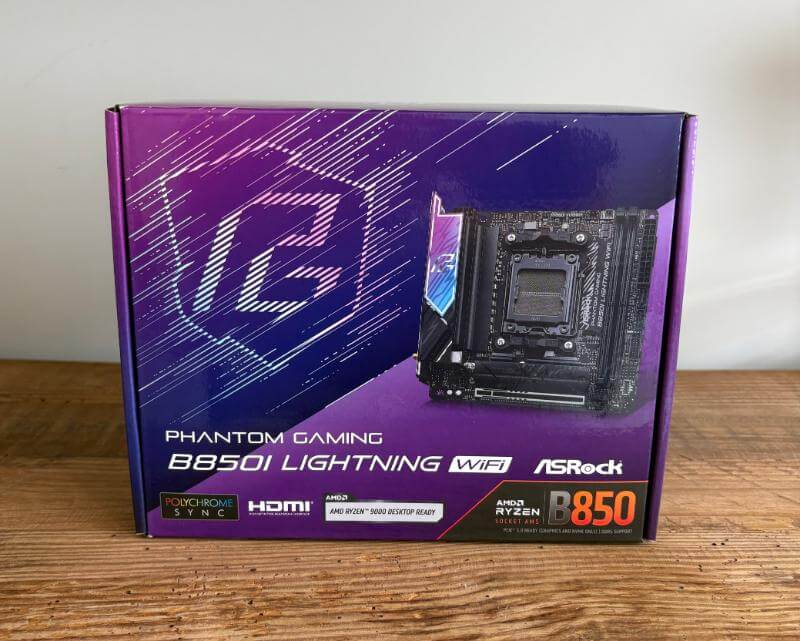
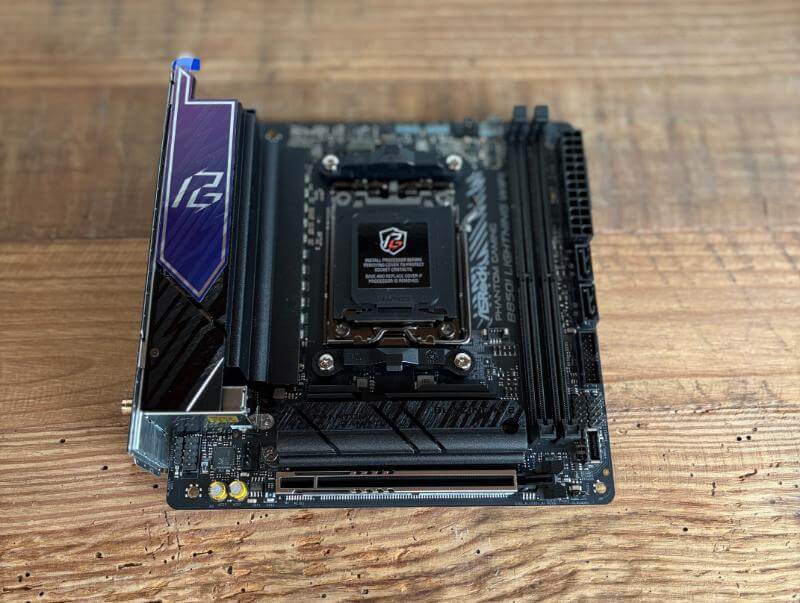
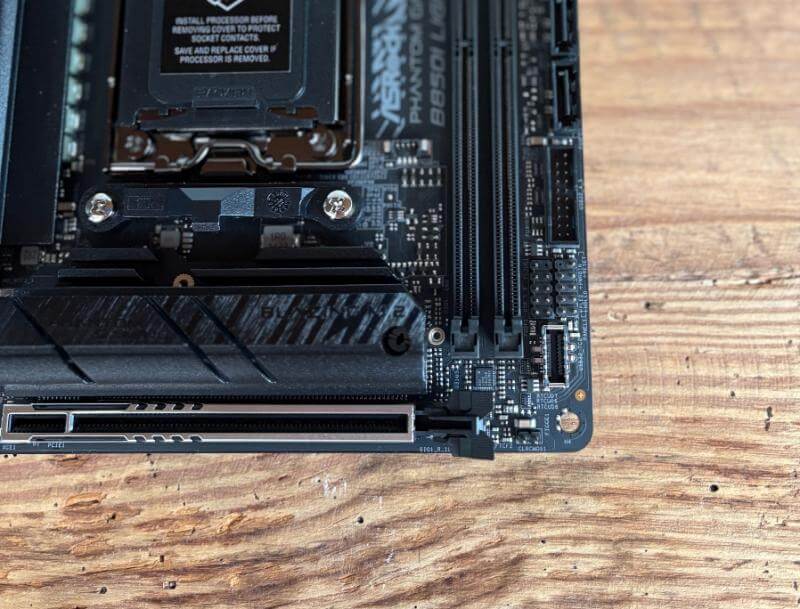
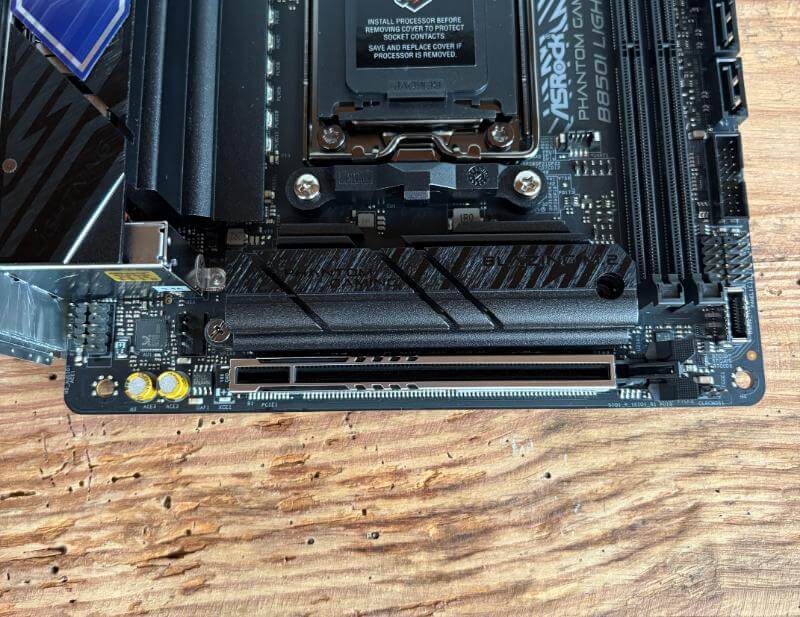
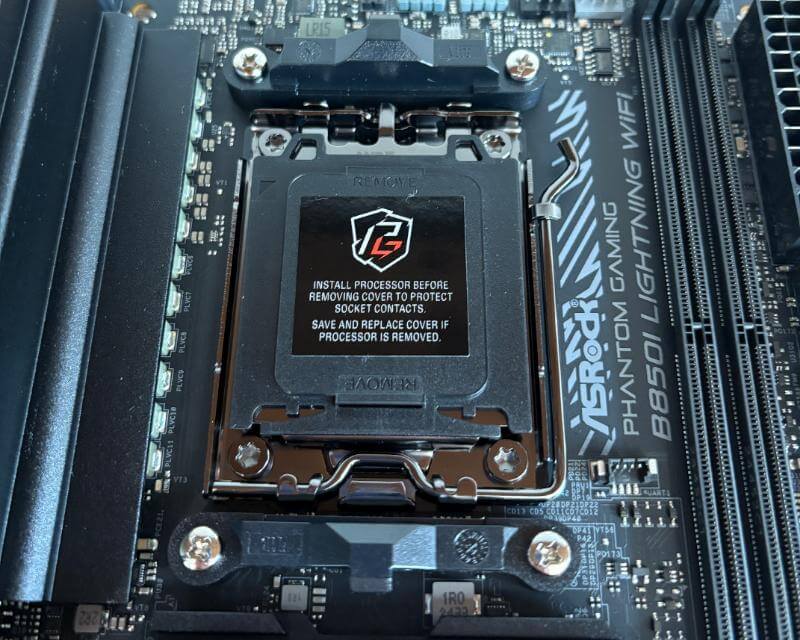
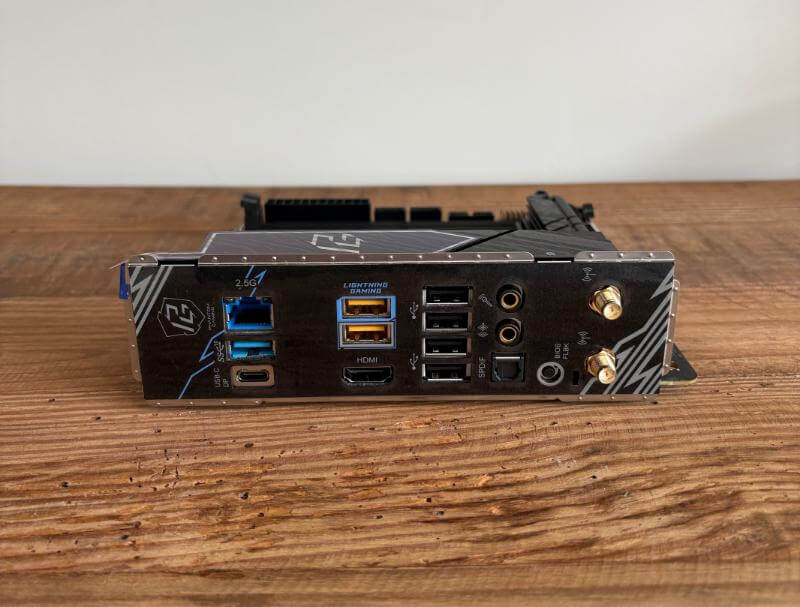
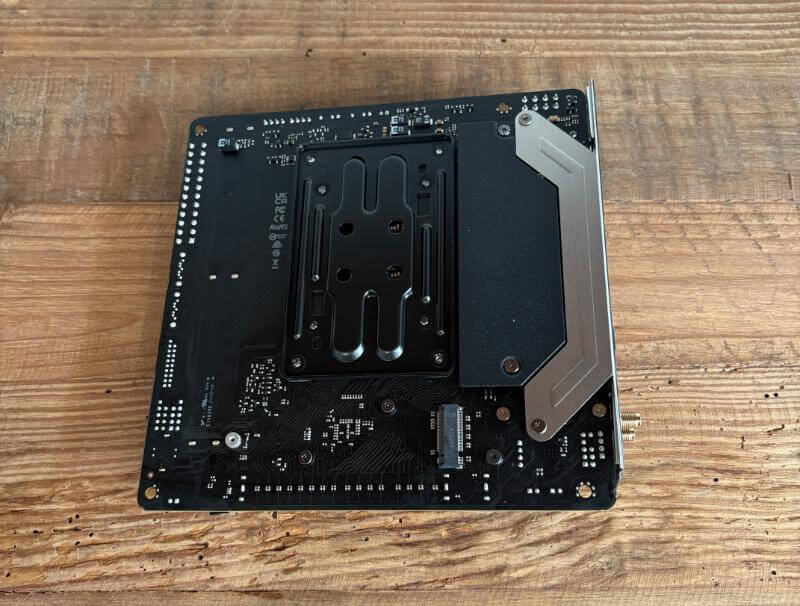
This motherboard avoids onboard RGB lighting, favouring a more understated and professional appearance. Despite the lack of flashy lighting, it still looks premium and well-composed, ideal for builders who prefer minimalism or want to create their own lighting setup externally.
The board is structured with an 8-layer PCB, a build choice that promotes reliable performance and signal stability. This foundation enhances thermal conductivity and ensures the system maintains consistent power delivery during intense workloads. It’s a sturdy board that feels purpose-built for longevity and precision.
The rear of the motherboard shows off its efficient use of space with a small metal backplate dedicated to cooling the VRM area. There’s also a second M.2 slot placed on the back, optimising the board’s limited surface area while maintaining solid thermal behaviour. These design decisions highlight ASRock’s thoughtful engineering in a compact layout.
Every connector and component is strategically placed for convenient access, whether you’re installing fans, connecting storage, or setting up RGB headers. The layout makes cable management simpler and allows airflow to remain unobstructed in tight cases. This contributes to cleaner builds and more effective internal cooling.
ASRock has integrated a reinforced PCIe 5.0 slot with steel shielding for additional durability, especially useful when fitting large or heavy graphics cards. The overall design doesn’t just prioritise aesthetics; it supports structural integrity and future-ready hardware in a condensed form factor.
Key Features
At the heart of the motherboard lies support for AMD’s latest AM5 processors, using the LGA1718 socket. This allows for compatibility with Ryzen 7000 series chips and ensures future-proofing for upcoming AM5-based CPUs. The socket is firmly seated and supported by a reliable power delivery design.
The VRM configuration consists of a 10+1+1 phase design, supported by 110A SPS components. This setup provides strong and stable power output, enabling both stock performance and moderate overclocking with confidence. It’s especially beneficial for maintaining system stability under sustained load.
Cooling performance is further reinforced by an enlarged heatsink featuring fins and thick thermal pads. This thermal solution covers the VRM area and helps dissipate heat effectively. It ensures that the board remains cool even in small cases with limited airflow.
Memory support is another highlight, with two DDR5 DIMM slots capable of handling up to 128 GB of RAM. The board supports speeds over 8200 MT/s (OC), leveraging both X.M.P and EXPO profiles. This makes it ideal for users wanting to extract high-speed performance from next-gen memory kits.
Storage options include two M.2 slots—one Gen5x4 with a dedicated heatsink on the front, and one Gen4x4 located on the back. Both support 2280-sized drives and allow for ultra-fast data transfer speeds. In addition, two SATA 6Gb/s ports are available for additional drive expansions.
The PCIe 5.0 x16 slot is reinforced for structural durability and uses SMT technology to ensure superior signal integrity. It’s designed to handle the bandwidth demands of the latest graphics cards. This makes the board a solid foundation for high-end GPUs in compact gaming rigs.
Connectivity is a strong suit, with a total of 13 USB ports spread across the front and rear. These include a mix of USB 2.0, USB 3.2 Gen1, Gen2, and a Gen2 Type-C port that supports DP 1.4 Alt Mode. The Type-C port can also function as a secondary display output, supporting up to 4K at 60Hz.
Networking is powered by an Intel Killer E3100G 2.5G LAN for wired performance, and Wi-Fi 6E with Bluetooth 5.2 for wireless connectivity. This dual-option setup caters to gamers, streamers, and creators who need reliable, fast, and flexible networking in a small build.
Experience Using the Product and Performance
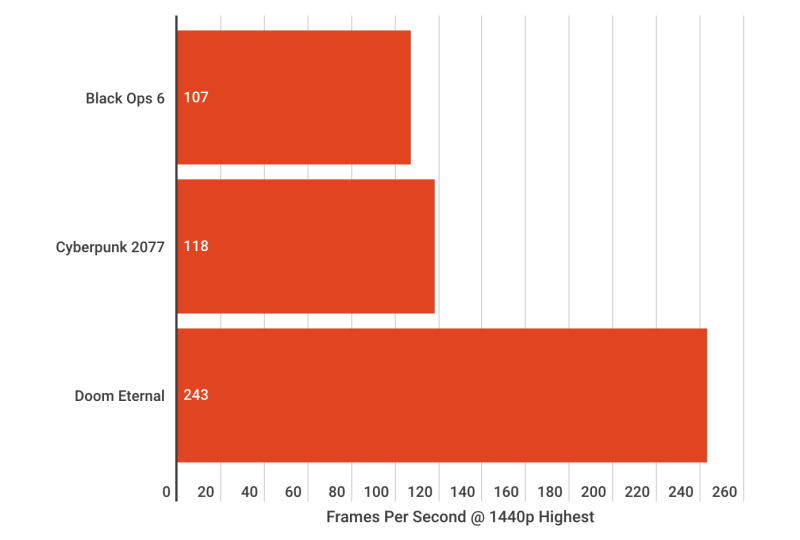
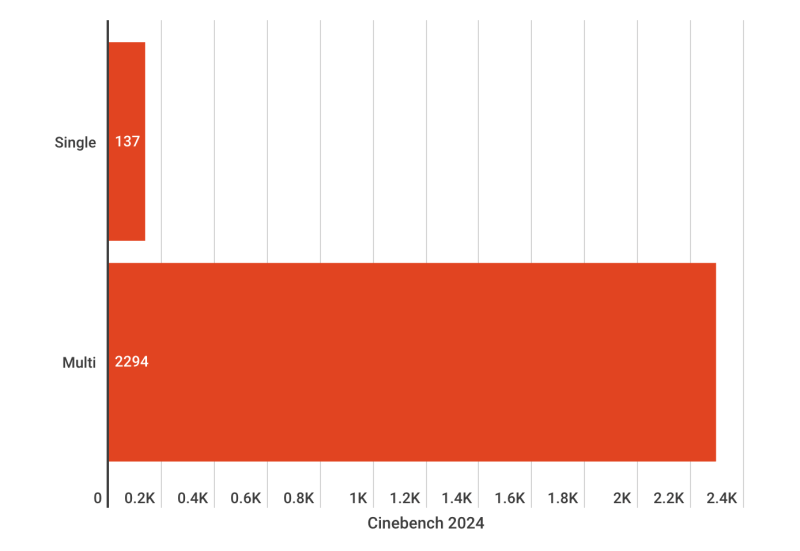
Setting up the ASRock Phantom Gaming B850I Lightning Wi-Fi is straightforward, even in compact cases. The integrated rear I/O shield simplifies the build process and helps avoid alignment issues during installation. All the internal headers are easily accessible, which makes cable routing smooth.
The board recognises modern DDR5 kits immediately, and enabling X.M.P or EXPO profiles is a simple toggle in the BIOS. Memory speeds are stable and consistent even when pushing past 7200 MT/s. This reliability makes the board a great partner for performance-oriented users.
Boot times are snappy and the BIOS interface is clean, responsive, and full of essential options for tuning and monitoring. Whether you’re adjusting fan curves or tweaking voltages, the experience feels intuitive. Updates to the BIOS are handled seamlessly through the built-in flashback feature.
Thermal performance remains consistent even under heavy workloads thanks to the sizeable heatsinks and thoughtful PCB design. During extended use, the VRM area remained cool and never caused throttling. This adds peace of mind when running demanding applications or games.
Storage devices operate at top speeds, with Gen5 and Gen4 M.2 slots offering fast loading times and transfer rates. The presence of a heatsink on the front M.2 slot helps keep NVMe drives from overheating. Even the rear M.2 slot, despite lacking a heatsink, performed reliably without instability.
USB device performance is excellent, especially when using the Gen2 and Gen2x2 ports. The rear Type-C port doubles as a video output, which is particularly useful for ultrawide monitors or 4K screens. It’s a convenient bonus for anyone who might not be using a dedicated GPU.
The audio quality from the Realtek ALC1220 codec is clear and dynamic, making it suitable for gaming, media consumption, or light editing work. Even when using higher-end headphones, the signal remains crisp with no noticeable interference. The board handles both input and output with clarity.
Networking performance is strong on both wired and wireless connections. The 2.5G LAN delivers stable low-latency throughput, ideal for gaming and file transfers. Wi-Fi 6E also performs exceptionally well when paired with a compatible router, providing fast and responsive connections.
Bluetooth 5.2 integration adds flexibility for connecting wireless peripherals or audio devices. There were no dropouts or pairing issues during use. It’s an appreciated feature for users who want a cable-free desk setup.
Fan control through the BIOS or ASRock’s software is granular and effective. Whether using an AIO, air cooler, or custom fan curve, the board delivers precise thermal management. Noise levels remain low even during demanding tasks.
The PCIe 5.0 x16 slot handles large GPUs securely, and the steel reinforcement ensures the card feels firmly seated. Even during transport or reconfiguring the build, the slot holds up without any signs of flexing. SMT layout ensures the best performance out of next-gen graphics cards.
Thermistor cable support provides a more advanced method of monitoring system temperature. This is particularly useful for enthusiasts looking to fine-tune their cooling or run a silent profile. It adds a layer of depth that many other boards in this size category lack.
Storage expansion feels generous for a Mini-ITX format, especially with both Gen5 and Gen4 M.2 slots onboard. The addition of two SATA ports gives users more options for backups or bulk storage. It’s a well-balanced configuration that maximises the available real estate.
Throughout general use, including gaming, creative tasks, and multi-tasking, the board remains responsive and steady. No crashes or hiccups occurred, and everything ran as expected. It’s a compact board that performs like a larger, high-end option.
Conclusion
The ASRock Phantom Gaming B850I Lightning Wi-Fi stands out as a well-balanced Mini-ITX motherboard that delivers solid performance without compromising on features. Its compact size makes it ideal for small form factor builds, while still offering the flexibility and power required for modern computing demands. It’s a board that has clearly been engineered with efficiency and usability in mind.
From its strong VRM design to its next-gen memory and storage support, this board is more than capable of handling gaming, content creation, and productivity. The thoughtful layout, reinforced PCIe slot, and clean aesthetic show that ASRock has considered the needs of builders who want both form and function. Every element works together to provide a seamless building and user experience.
Wireless connectivity, fast LAN, and a range of USB ports—including video-capable Type-C—make this board a future-ready solution. The inclusion of helpful extras like the thermistor cable and integrated I/O shield adds value, especially for users building in tight spaces. Performance remains consistent under load, making it suitable for a wide range of tasks.
If you’re building a compact PC and want a dependable, modern motherboard that supports the latest hardware, this board delivers on all fronts. It’s a reliable foundation for a powerful yet space-conscious system, backed by ASRock’s design quality and technical refinement.

